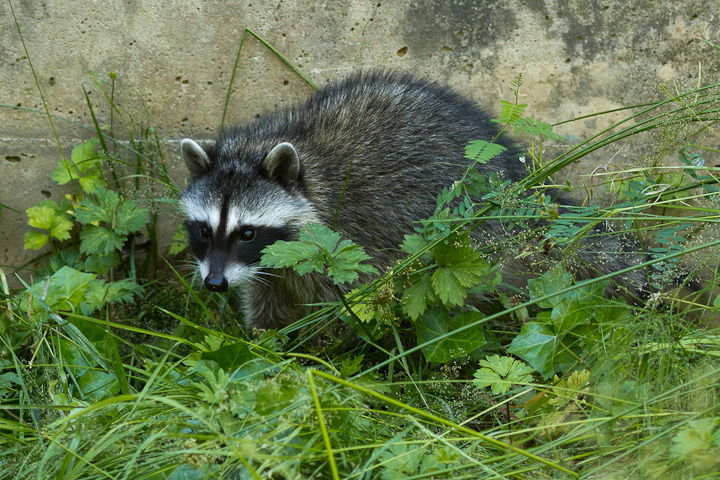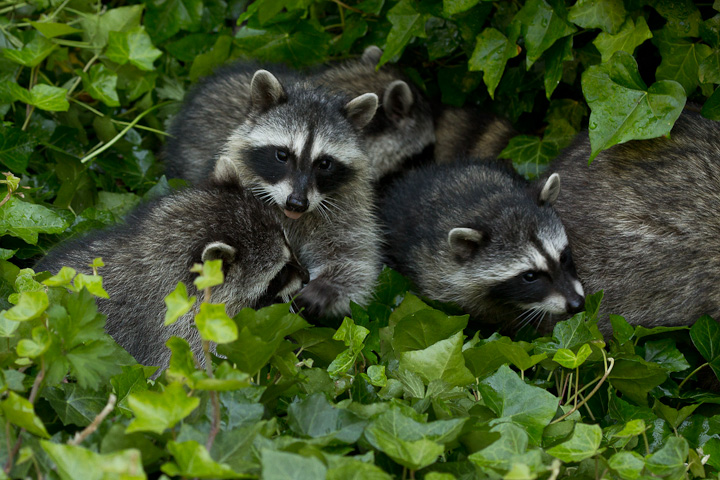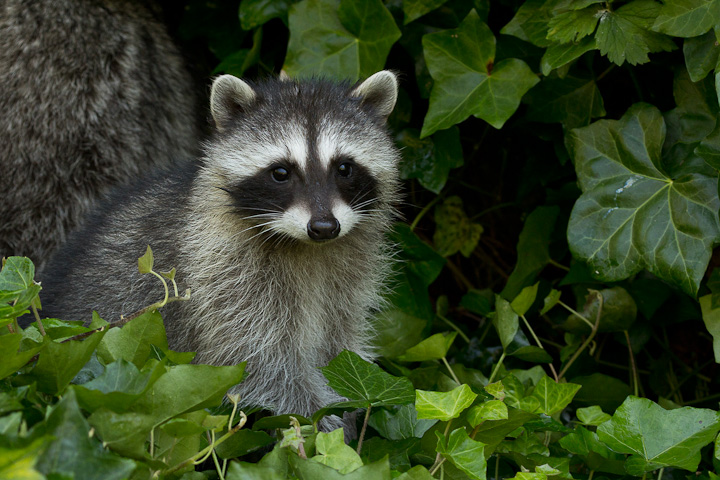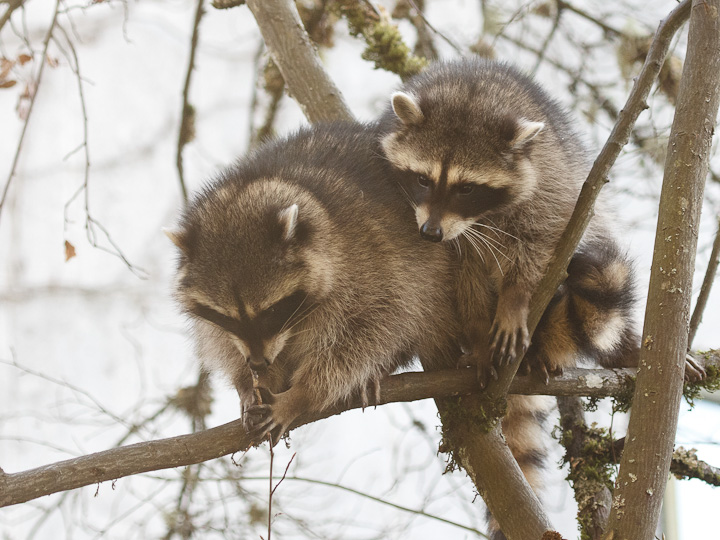
The family of momma raccoon and her four youngsters is still hanging about outside the lab. I caught up with them yesterday, looking fine in their winter coats!
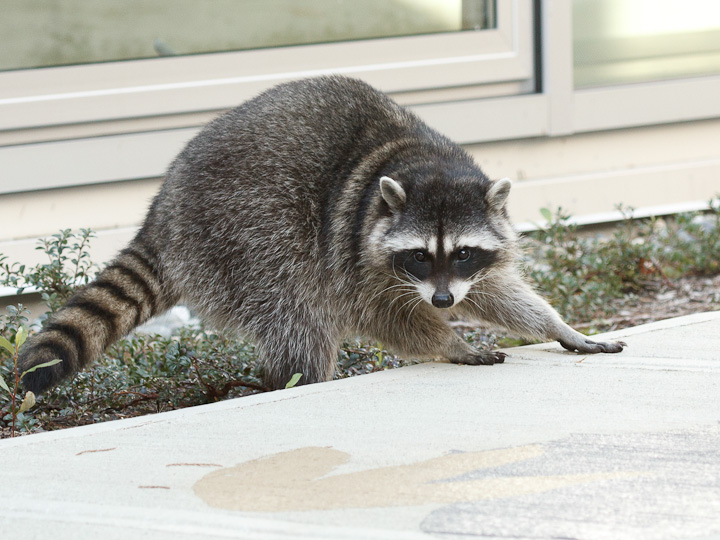
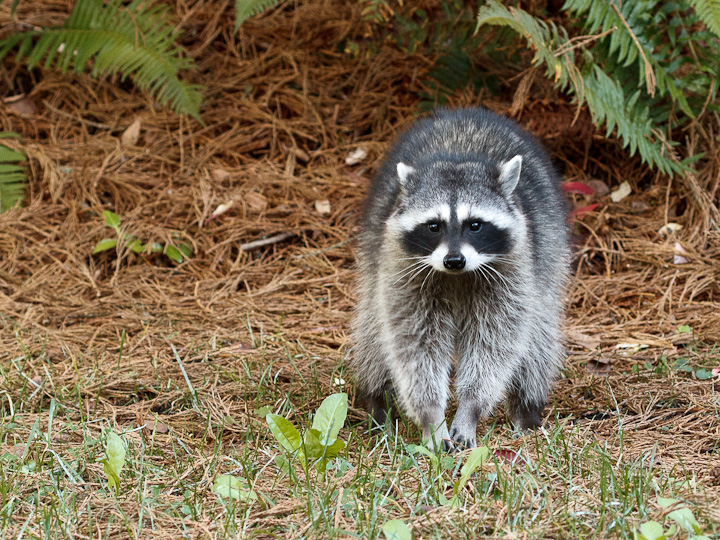
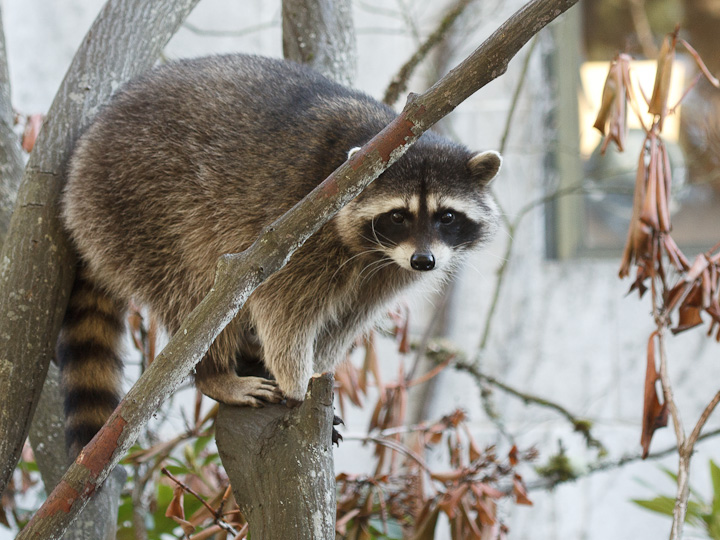

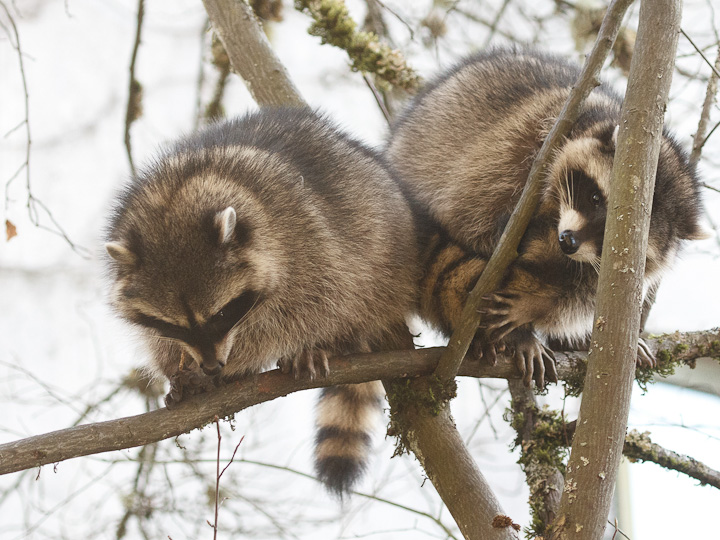


The family of momma raccoon and her four youngsters is still hanging about outside the lab. I caught up with them yesterday, looking fine in their winter coats!






This is a post to announce my new paper, which has a bit of a mouthful for a title: Developing a paired-target apparatus for quantitative testing of nest defense behavior by vespine wasps in response to con- or heterospecific nest defense pheromones
This is a paper that was long in the making, and there are two important things you should take away from it: 1) the bioassay setup is cool and 2) three species of the genus Vespula recognize each other’s alarm pheromones
OK, so why alarm pheromones? Well, many social insects coordinate their defences against predators using chemical signalling. These signals can arouse a colony into defensive behaviour, and often can be applied to attackers to attract other workers to attack the intruder. In some cases these chemicals are one and the same, in others, they may be different. No matter! Although our efforts here were part of an attempt to describe the alarm pheromone chemistry of these yellowjackets, we never did succeed in isolating the exact chemicals needed to mimic the naturally-occurring alarm pheromones.
Many wasp species have their alarm pheromones in their venom sac, and presumably, when disturbed extrude a little venom to signal other workers, or deposit venom on nest predators to “mark” them for attack by the colony. We worked with three species of yellowjackets, Vespula pensylvanica, Vespula alascensis and Vespula germanica. The substances we tested in this study were venom sac extracts of these wasps dissolved in acetonitrile, an easy-to-work with polar solvent.
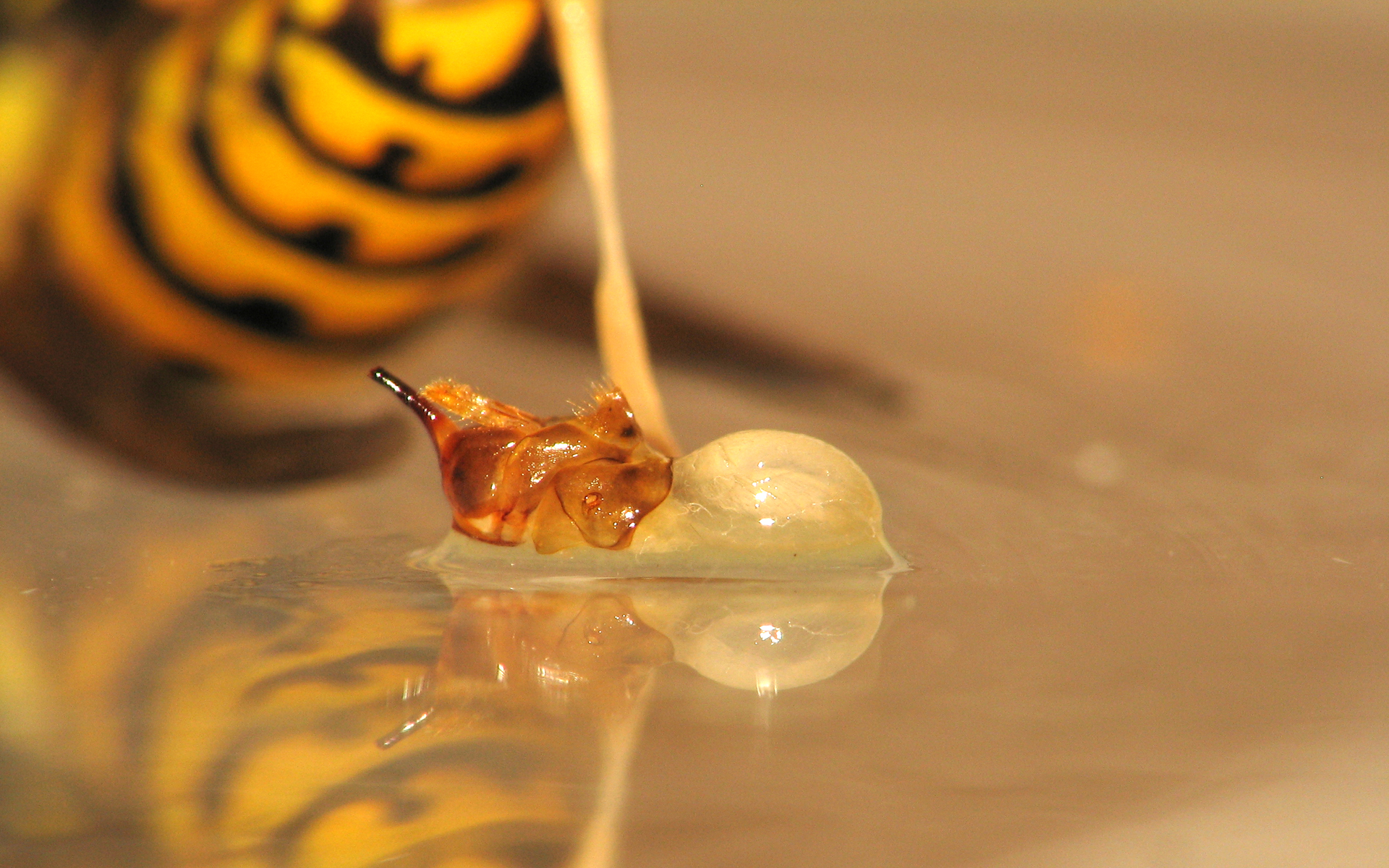
We dissected out venom sacs (the translucent jelly-bean looking thing) and crushed them in acetonitrile, at a rate of 1 sac per 10 microliters. We filtered the extracts and stored them cold for later use.
To test the effect of the putative alarm substances in these extracts, we needed a bioassay device. Because no standard protocol existed, I designed one that I hope will become the standard for any future experiments:
In 1995, Visscher and Vetter (yes, that Vetter! The spider guy!) developed a resonant-target attack counter for use in quantifying defensive attacks by yellowjackets and bumblebees. It so happens that when these flying stingmeisters attack, they fly at high speed toward their victim and strike it with force. Visscher and Vetter’s device utilized this important fact by surrounding an audio microphone with a resonant plastic target, and using an electrical counter to count the hits. The device requires construction of the counting circuit, but I thought, why not just record an audio file and count the strikes later?
Basically the device I designed is an elaboration of Visscher and Vetter’s strike counter, only it can be assembled with off-the-shelf components, and utilizes free software to count the strikes recorded to an audio file. In addition, my design is explicitly for use in paired assays, as wasp attack behaviour is often quite variable from one situation to the next, and experiments to test the effect of alarm pheromones can benefit greatly by pairing the treatment and control in each replicate. Think of it as blocking! at 9 am, the wasps are really feisty, and hundreds come out to strike, at 10:30, the attack is less fierce. If we did a control run with a single target at 9, and a treatment target at 10:30, we would be misled, but with a paired design we can determine that our treatment has an effect in both replicates. This saves immensely on the number of replicates required to see a difference.
OK, so here is how the device looks:
The vast majority of the components are very easy to acquire, and the only construction requires a bit of drilling and screwing in of wingnuts and bolts. Everything else is off-the-shelf, and the device folds up neatly for transport and storage. The targets are formed from thin black polystyrene weigh boats, which make a drum-like sound when struck, and they can be disposed of between each replicate so that residual alarm pheromone is not a problem.
Here is what it looks like when a wasp strikes a target:
The basic process of doing a bioassay is to place the device so that the targets are equidistant from the nest entrance, apply a test substance to one target, a control solvent to the other, start the recording, and then tap the nest entrance to get the wasps activated (note, this step not ALWAYS needed! Some nests are on high alert anyway!)
Here is a video of the device in operation, with audio derived directly from the paired microphones. In this case, the pheromone extract is placed on the left-hand side of the device.
After each assay, the device is removed, the targets replaced, and then the treatment and control are re-applied for another replicate. I always alternated the left-right placement from one replicate to the next, to avoid any side bias.
After a number of replicates (at least 10, better 15 to 20), the audio files are offloaded from the digital recorder, and split into treatment and control files for each replicate. You can use Audacity (a freeware program) to do this.
A simple oscillogram of each file often shows an effect: This is how the two oscillograms look for the left (top) and right (bottom) channels. As you can see, the left hand side experienced more strikes in this short clip.
But how to count these strikes effectively? Well, the solution is another freeware program, SoundRuler, developed by Marcos Gridi-Papp for his teaching in bioacoustics. My application of this software is really wasting its potential, but it works quite well for counting these loud percussive strikes!
In the SoundRuler interface, some simple rules for counting the strikes are programmed in, then automated counting of the entire range desired is simple:
Alright! So that is the development of the paired-target bioassay device, as well as its operation. What did we use it for?
Well, we tested whether three species of ground nesting yellowjackets, Vespula pensylvanica, Vespula alascensis and Vespula germanica have an alarm pheromone in their venom sacs. We also tested whether or not these species would recognize the alarm pheromones of the other species. It turns out that they do!
So what would be the advantage of responding to the alarm pheromone of another yellowjacket species? Well, each of these species has a very similar life history, being ground-nesting, and needing to defend the nest from the same kinds of predators (bears, skunks, raccoons, humans). I can see the advantage of responding early to a “pheromone-marked” predator which had just attacked another species, stinging it and driving it away before it has the chance to attack your own nest. These alarm pheromones probably evolved once in the vulgaris species group, and there was no selection for differentiation, and possibly selection against it.
So there you have it! An inexpensive, easy to construct bioassay device that you can use to test alarm pheromones in large stinging wasps! A counting protocol that is easy and fast! What more could you want? Well, I suggest that the first thing you could wish for is very good luck and/or insight into the complicated chemistry of these alarm substances, but this study has at least provided some new tools to get there.
OK! So that is the paper. I hope you enjoyed it, and be sure to read the whole thing over at the journal website! In the meantime, please enjoy these awesome pictures of the bioassay device in operation.

2013 has been a great year for shooting as well as for getting my images out to people who are interested, via this blog! There are so many decent images to choose from, and I am a bit pressed for time right now, so I will organize the pictures that stood out for me phylogenetically.
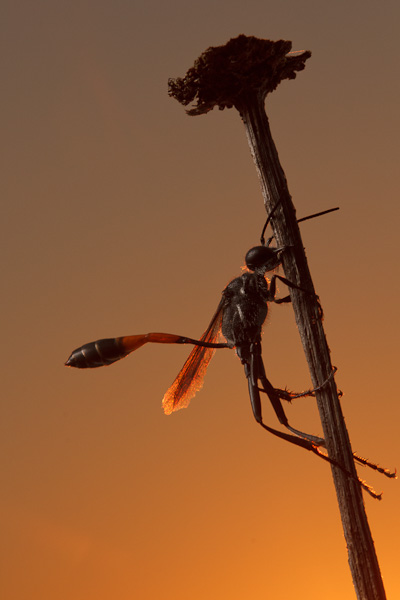
One of the beautiful Ammophila featured in Ibycter Illustrated. Photographing sleeping Hymenoptera at sunrise gave me a new appreciation for mixing ambient and flash.

I love the way the dew sparkles on this Lycaenid.

In 2013, I got to indulge myself with many opportunities to shoot Coelioxys, my favourite Megachilid.

Using flowers as colourful backdrops was something I explored in the gardens this year.
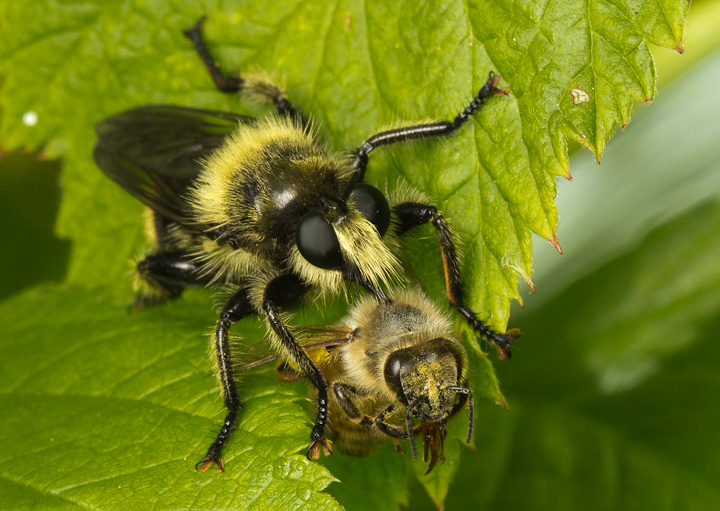
Not the best technically, but it was great to come upon this scene of predation between Laphria and Apis. Productive slacking indeed!
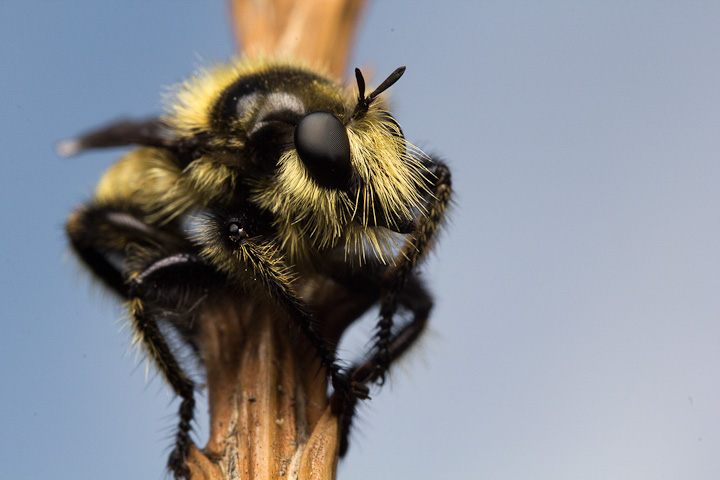
Another Laphria found on a window provided a good long photo session so I could explore lighting against the sky.

The end result of a syrphid rearing experiment! Feed your syrphid well!

Some time spent in Victoria in the spring was a good time to revise papers and look for beautiful snakeflies!

After this shot, I resolved to shoot more ants, but unfortunately I did not follow through. This was the best ant I shot all year.

I explored a bit of underwater photography with micro-aquaria, but could use some more practice.

I got to use the Monster Macro Rig to good effect in lush grasses, where it excels.

And more Coelioxys!

This was a great year for spider photography, and I shot many species, such as this uloborid, Hyptiotes gertschi.

Although I worked out a hypothetical method for better jumping spider photos, I never put it to use. I got some decent jumper pics nonetheless,

While exiled in Port Moody, we managed to witness some dramatic spider action.
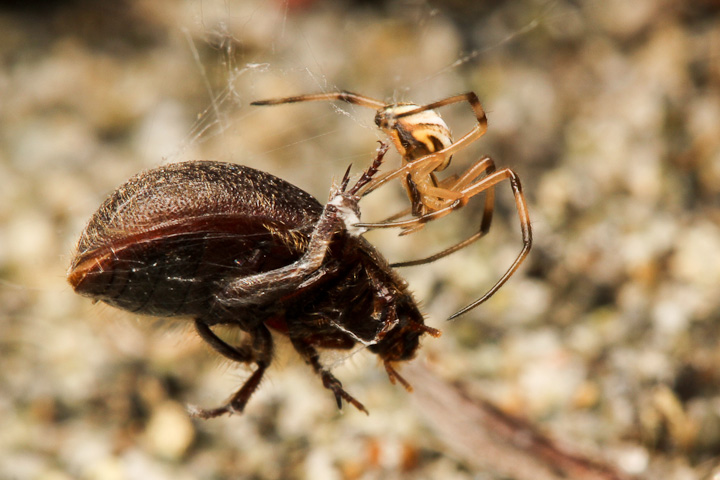
Fieldwork at Island View Beach provided a good excuse to shoot black widows and other great animals.
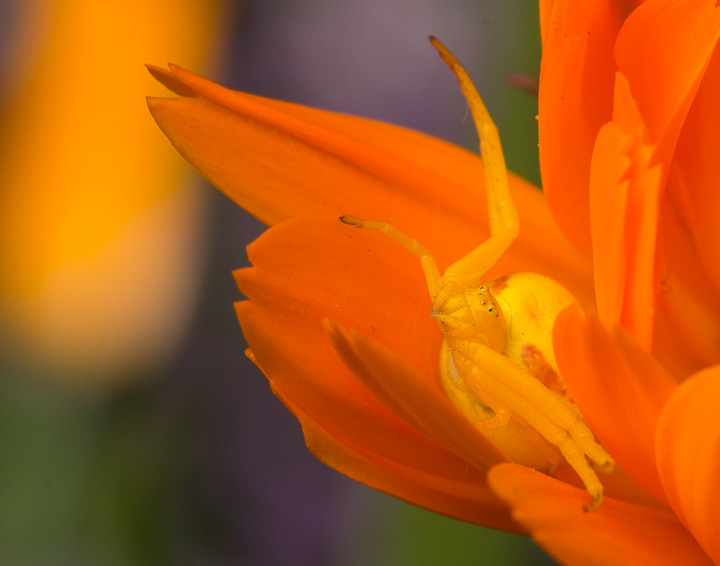
I managed more than my fair share of crab spider shots, like this one during some time in the community garden.
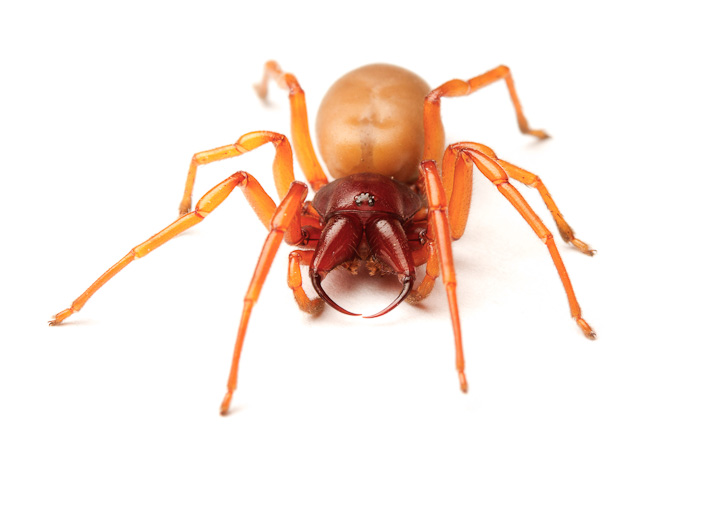
This dramatic shot of a Woodlouse Hunter was a big hit.
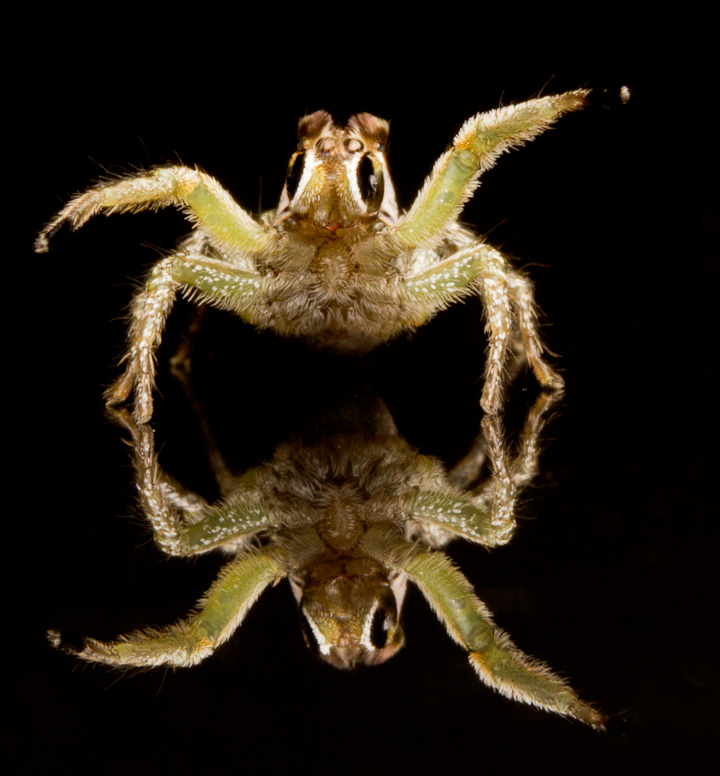
Some of the studio shots I took of jumpers at Iona were also pretty dramatic. This Habronattus ophrys male was pretty on black.

Jumpers also stand out on white.
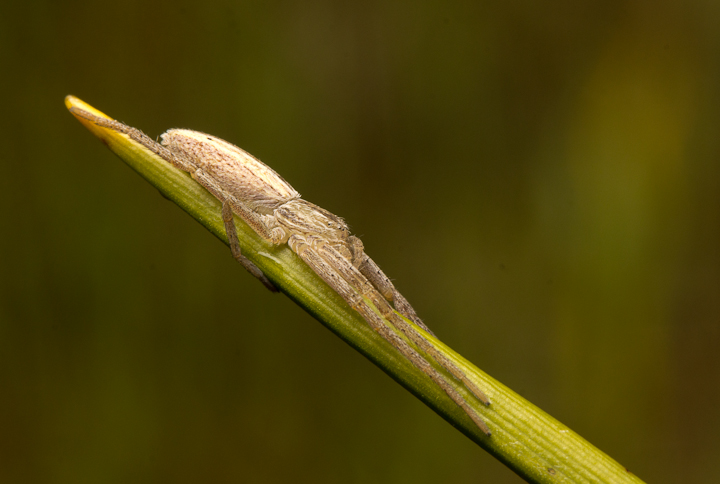
I found several long philodromids this year, which look elegant stretched out in their concealed mode.

Following a gravid Cellar Spider was a great lesson in spider reproduction.
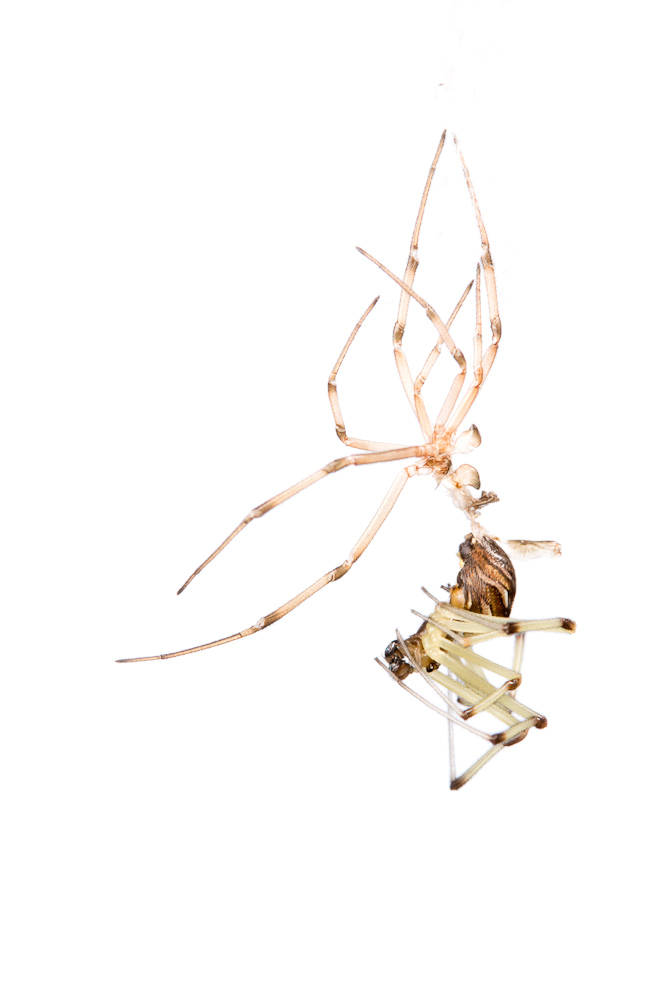
This molting clack widow was a great treat to see.
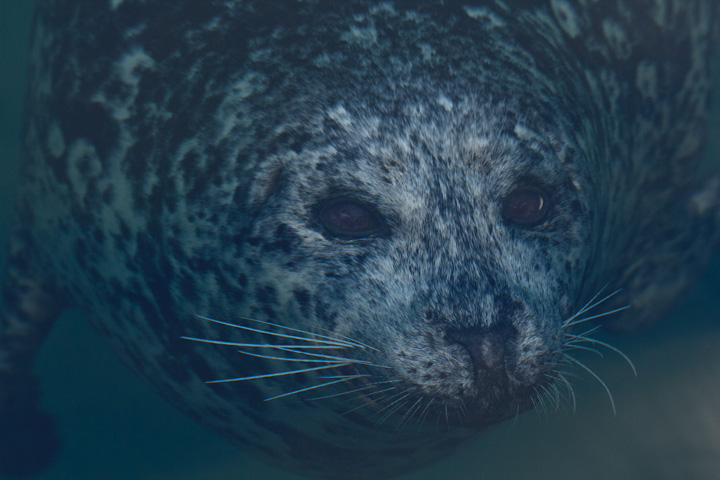
Shooting seals underwater was a highlight late in the year, thanks to aquiring a GoPro.
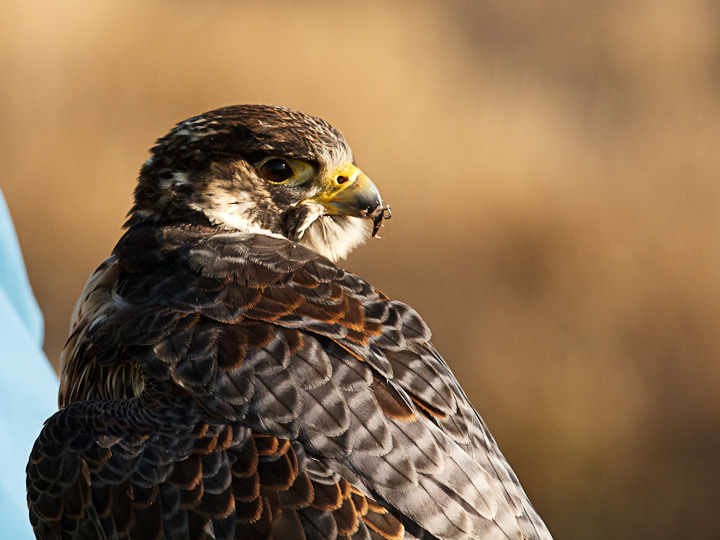
Getting out to YVR with the Wildlife Control people was a really fun experience. This molting Peregrine tiercel was one of the better shots I ever got of a peregrine.

I indulged my crow photography habit more than a little in 2013

A family of raccoons provided entertainment and photo ops all through the year

This snapshot of an injured duck led me into some community activism, and was ultimately used in newspapers and at council meetings.

I git some decent shots during feeding time for some barn swallows.
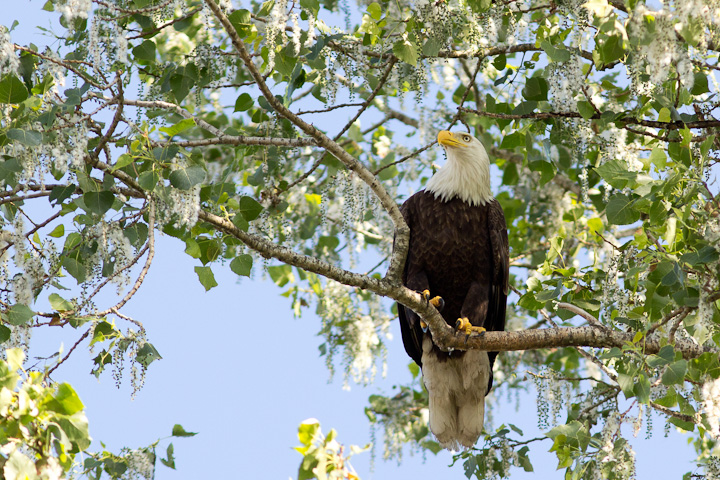
This eagle in a cottonwood highlights the gentle light you can get on a bright summer day under the shade of a tree.

Probably my favourite bird shot this year, this male Annas hummingbird was spectacular in the evening light.

A studio session with Jasmine the cat provided some ammunition in the war for equality.

These trumpeter swans emerging out of the clouds were also a favourite.
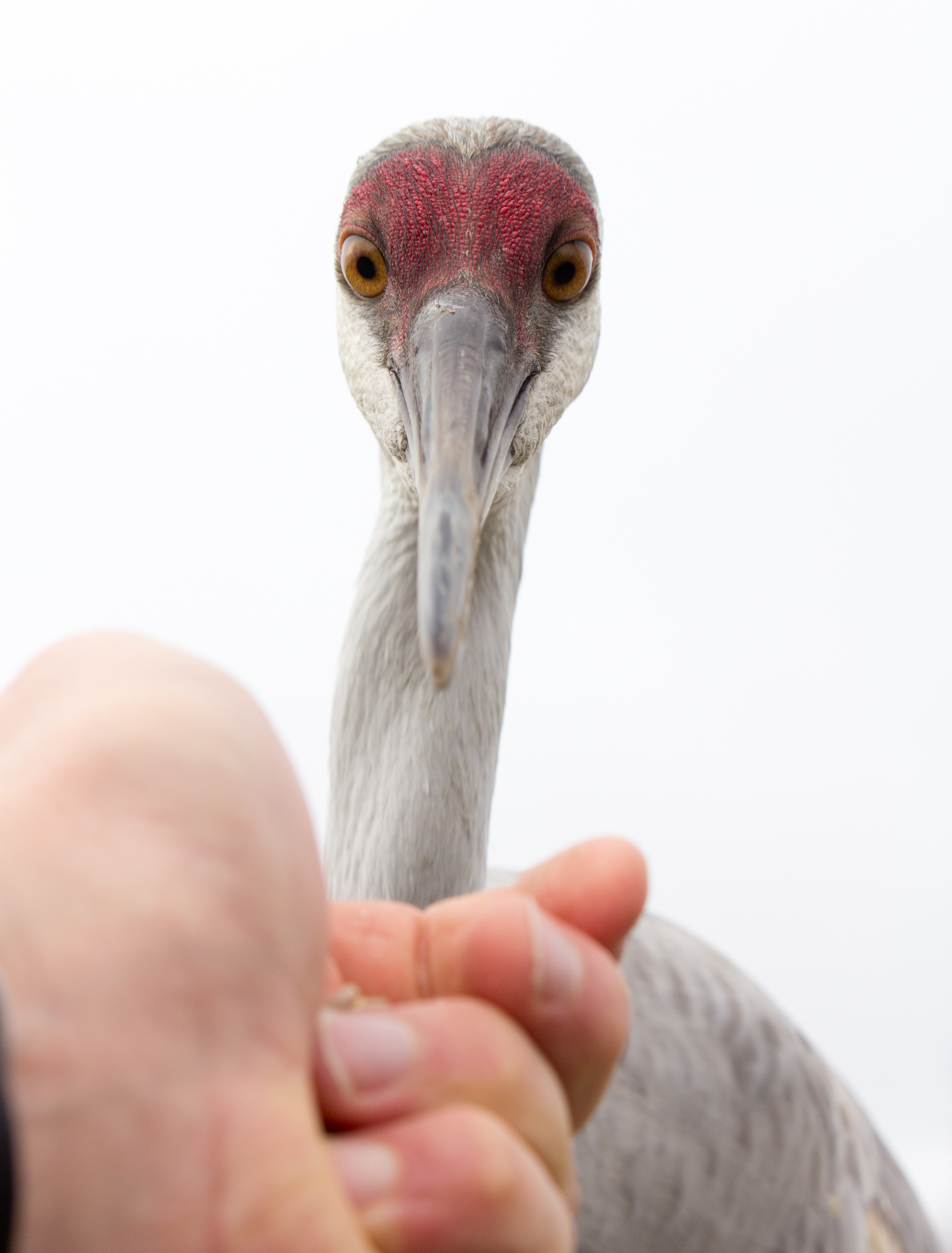
Sandhill Cranes up close are kinda crazy looking!

I lost my good friend and adventuring partner this year. Maggie was an awesome dog and I will miss her greatly.
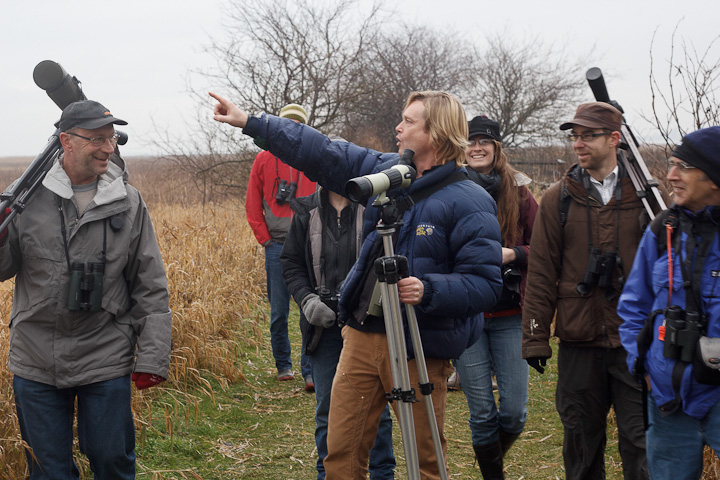
I got out several times with Wild Research on birding trips. This shot of Paul Levsque channeling Steve Zissou was fun.
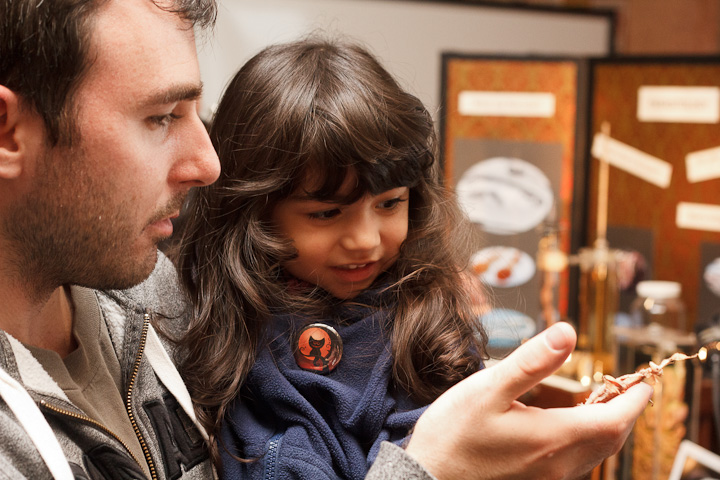
The most fun I had with people was some of the outreach we did bringing insects and spiders to kids.

Antonia with maggot art at the Halloween Spooktacular
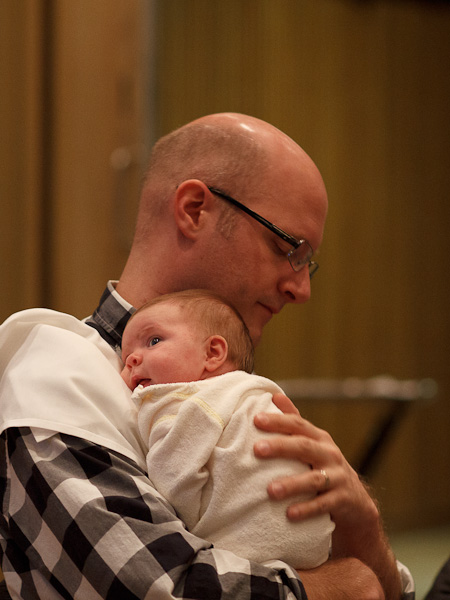
Meeting Alex Wild and others at the ESC in Guelph was an unexpected boost.

Attending Alex Wild’s insect photography workshop with Mike Hrabar was a great way to start the conference.

Sometimes going out mushroom hunting with friends is the best cure for the fall blues.

Catherine Scott, my scientific collaborator and fellow member of Team Caracara has a great smile and killer stats insight.

Getting out and speaking up for what matters is important. This was shot at the “Stand Up For Science” rally in Vancouver.

OK, here are several more shots of kids with bugs. What could be more awesome?

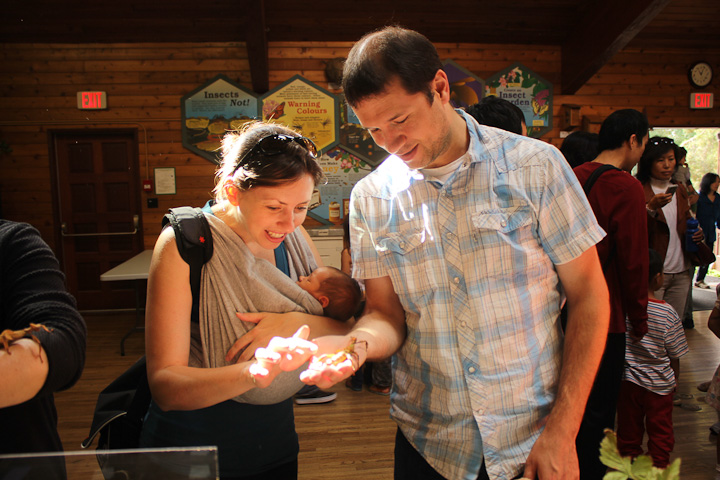

People gathered together for Moth Night. A great way to spend a summer evening!


Doing Barn Owl work with Sofi was pretty fun. We managed to capture several owls.
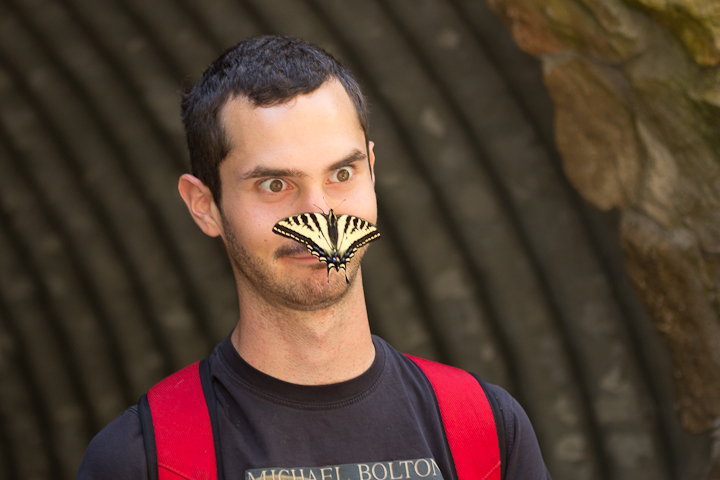
A butterfly outing!

Tavi and Viorel
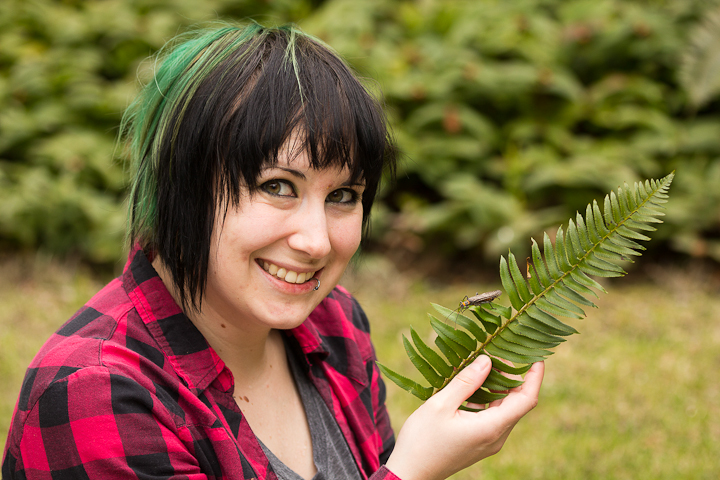
Antonia with a great stonefly!

The adventures of the SFU raccoons continue! Today, they were getting into the buckets outside the building.
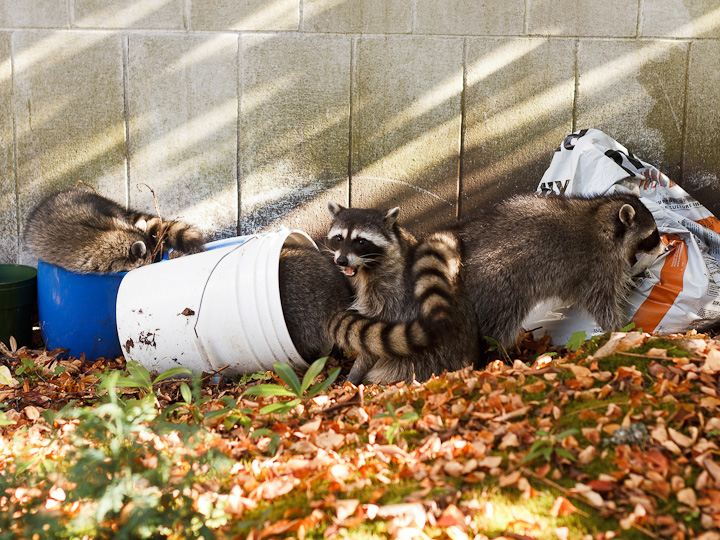


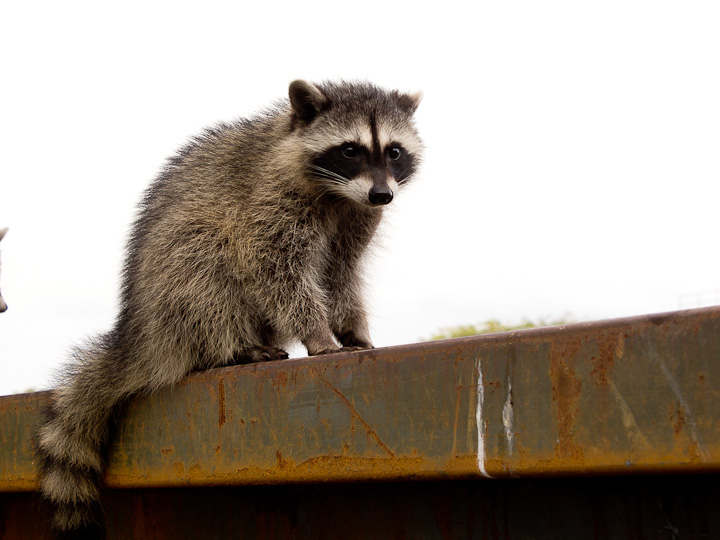
After last night’s depressing post, I got a bit of a lift from some raccoons that we found on the way to the lab. I reckon this is the same family I shot a few weeks ago. This time they apparently came into the lab, and when Catherine and I came upon them, they were scavenging in a dumpster outside the Chemistry Building. Anyway, enjoy the baby raccoon break!
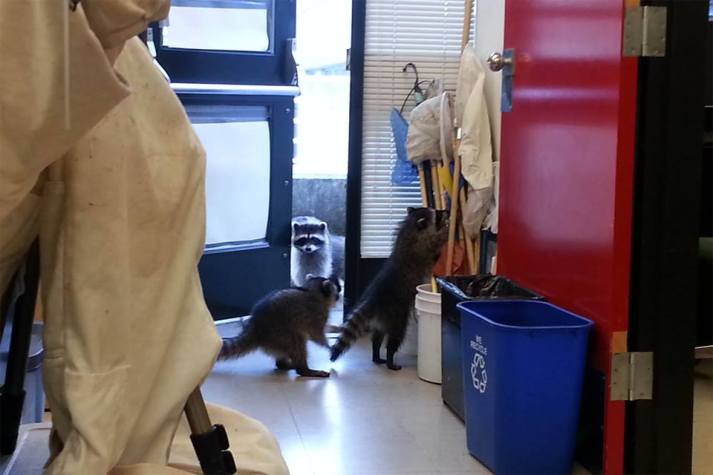
Surprise lab inspection! Photo by Mike Hrabar.







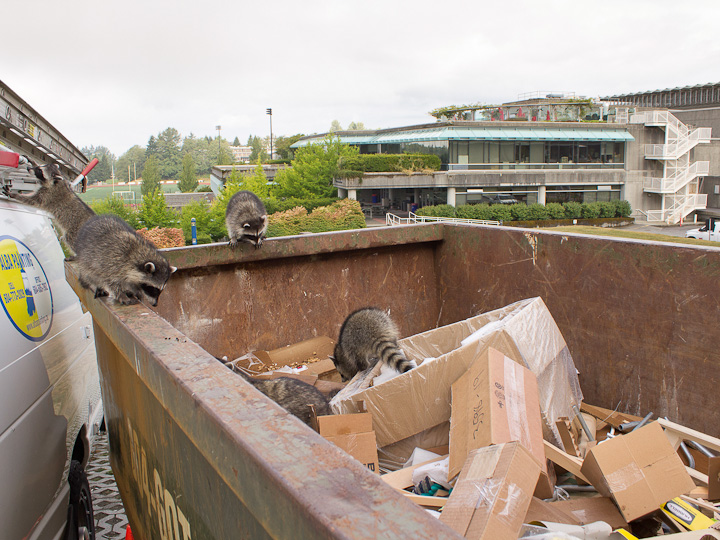




Yesterday, while traversing the courtyard near the insectary, I came upon a family of 4 baby raccoons and their mom. As I had been struggling through a grant application all day, these were an awesome lift to my spirits!
